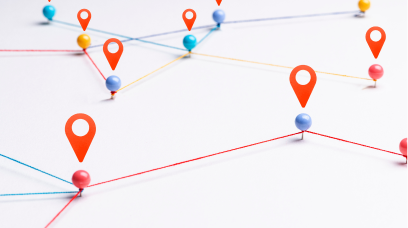|
Getting your Trinity Audio player ready...
|
Federated Learning is simply collaborative Machine Learning without centralizing data. Whereas standard Machine Learning approaches require centralizing the training data on one machine or a data center. Federated Learning is a new science in AI that is welcoming the era of decentralized Machine Learning. It is a framework that displays the power of decentralized learning to compute across millions of devices and consolidate those results for making better predictions. In this article, we have discussed how Federated Learning is transforming artificial intelligence.
What’s Federated Machine Learning?
Federated Learning in AI is the driving force behind the transformation of Machine Learning applications has been developed and applied recently. Centralized Machine Learning has always been about developing an algorithm using trained data sets as samples and applying the same learning for analyzing large volumes of data. But Federated Learning is the area of distributed Machine Learning where many devices located remotely are trained together for sharing and exchanging data independently. Unlike centralized learning where model training is limited to a defined set of principles, decentralized learning provides more opportunities for customizing the ML modeling.
To understand better let us explore some limitations of centralized Machine Learning that opened the door for Federated Learning and its growth.
Centralized training requires data to be stored at a central location or on a data server thereby limiting access to information and raising concerns about data security.
Storing data at a central server not only leads to a violation of user privacy but also poses a risk of releasing other personal data as well.
It is more difficult to handle large volumes of data for start-ups and companies that couldn’t afford to allocate maximum resources to enhancing model accuracy. AI and ML applications work on simple logic. The more data you provide for training the better the model prediction will be. Without data, there will be less adaptability and low accuracy in models, which are neither preferable to users nor organizations.
These challenges are addressed by adopting Federated Learning. The two major challenges like an increase in the number of devices the data are collected from. Secondly growing concerned over data privacy. Federated Learning (decentralized Machine Learning) can help engineers design improved AI systems to collect data that is being aggregated from mobile and edge devices to enhance the user experience without compromising on user privacy parameters.
How Does it Work?
In a Federated Learning framework, many devices- also called nodes or clients collect data from the remote part of their network. Each node updates the newest information to the central model or model updates to a data server, which creates an aggregate ML-trained system for all the nodes involved. Where every node trains the same ML model architecture independently. As data is never shared or uploaded to the server it prevents data leakage. FL model roots for continual ML development, where it is constantly improved and updated into a better system.
Typical Federated Learning solutions start by training a generic Machine Learning model in a centrally located server. This model is sent to user devices where the model learns from data generated on client systems to get better over time. As a next step, all the local model learnings are passed on to the central server without ever actually sharing original personal data with servers. And finally, the central server then aggregates the new learnings from the local model and continues to improve the shared model.
How It Is Transforming The Future Of Machine Learning Applications?
Federated Learning is still in its infancy, with emerging ideas the researchers are still developing into real-life use cases and applications. Some possible applications that have shown their prominence include the following.
- Healthcare One of the most popular Machine Learning applications – predictive models for analyzing electronic healthcare data has seen many advancements. But with Federated Learning researchers promise to analyze unused health data and create better patient-oriented service-based models.
- Medical Imaging Medical images are expensive and difficult to acquire without any privacy concerns. It can be time-consuming to share these image files due to their size for real-time data analysis. In the Federated Learning framework, these images can be used for training models on-site for developing an overall aggregated system, which has been optimized from a larger diversity of data.
- Autonomous cars Self-driving cars have been a phenomenon in the automobile industry. And we can take this advancement a step further with the Federated Learning framework. Every self-driving car acts as an edge device that continuously monitors and collects data while driving. Then data is collected by each car including several driving parameters such as real-time traffic, road, and weather conditions, along with telemetry (motion and mapping) data is updated to a central server. Which ensures continual model learning and improves the real-time decision-making of the self-driving car system.
- Improving search query suggestions Google is testing an improved search query-suggestion system for its Android virtual keyboard (“Gboard”). In this case, the Federated Learning algorithm is used to study the on-device history to improve the keyboard’s search suggestions.
- Smart Manufacturing In the manufacturing sector, Federated Learning can be used to enhance robot on-floor assistance, digital twins, and predictive maintenance models without exposing data from different automotive factories. Where different manufacturing units can collaborate on developing aggregated ML models without compromising the privacy of proprietary data.
Eventhough Federated Learning is still in the research stages, corresponding to its challenges and limitations it is one of the most highly adopted technology in recent times. It provides an advantage to Machine Learning engineers to move away from traditional centralized learning models and adopt new and innovative practices to scale Machine Learning model personalization and improve enhancement. To know more about adopting Federated Learning for Machine Learning connect with us.
